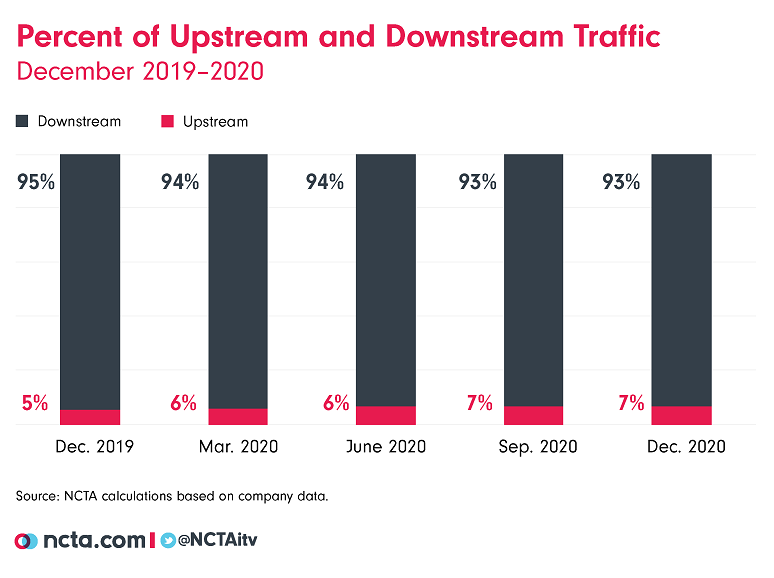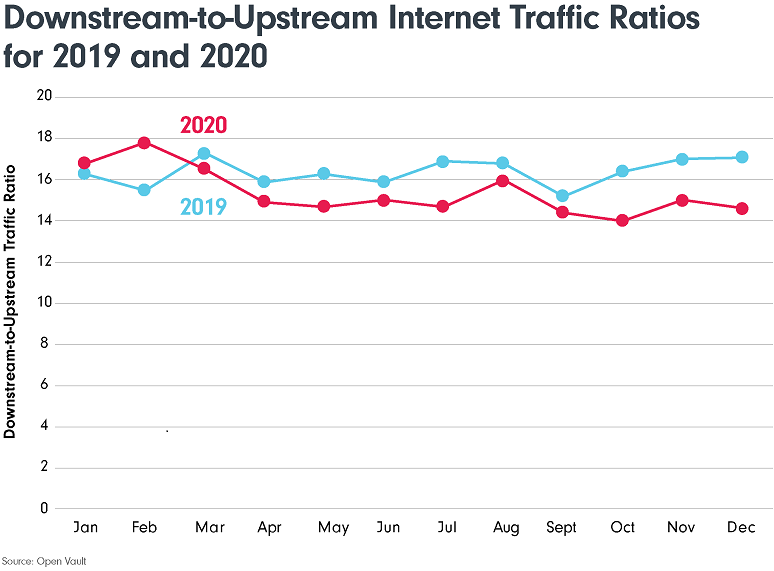With millions of people working and learning from home (via the internet) last year due to the COVID-19 pandemic, America witnessed its biggest ever surge in internet traffic with spikes of 60% in some markets. Since last March, NCTA has tracked and published data showing how online usage has changed during the pandemic and how cable’s broadband networks have risen to the challenge of these traffic spikes.
Not surprisingly, a new study by OpenVault found that upstream traffic consumption hit an all-time record in 2020, increasing by 63% between December 2019 to December 2020. This growth rate is 350% higher than the growth rates of each of the two previous years (2018 and 2019 each experienced an 18% rate of increase for upstream usage). But while these percentages are historic, total upstream traffic is still miniscule when compared to how much total downstream traffic is consumed every month.
The nature of residential broadband traffic has always been asymmetrical, and even now and throughout the pandemic downstream traffic has remained dominant. In fact, data from NCTA member companies show a downstream-to-upstream traffic ratio of 16:1, largely driven by video streaming which is by far the biggest source of internet traffic.


According to OpenVault, the greatest increase in upstream consumption occurred during business hours, "reinforcing the significant role that the upstream has played in remote work and education."
Cable's broadband networks have performed resiliently even when faced with incredible demands for upstream usage because providers continually add capacity and upgrade their networks to meet consumers' evolving needs. ISPs also use artificial intelligence and machine learning to deliver instant capacity and solve network issues ahead of time. Not to mention, the cable industry has invested billions of dollars into building a robust and scalable platform that stays ahead of technological advances and consumer trends.
In fact, the cable industry's 10G initiative—the industry’s promise to deliver 10 gigabit speeds throughout the world—is a testament to ISPs and their ability to future proof their networks in preparation for whatever the future brings. The latest 10G trial just indicated that multigigabit symmetrical speeds are viable over the cable broadband network that is already available to hundreds of millions of homes.
So while the pandemic may have "changed the nature of upstream usage—in all likelihood, forever," as the OpenVault report states, cable ISPs are already ahead of the curve to ensure that people continue to receive a seamless internet experience in their homes, no matter what is going on in the world.
To check the latest findings on nationwide network performance during the pandemic, go to the NCTA COVID-19 dashboard.
